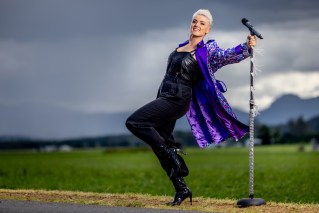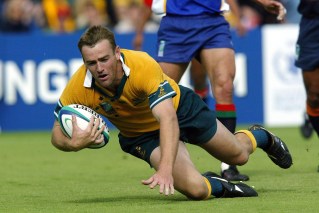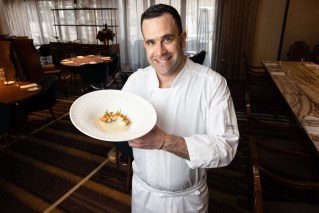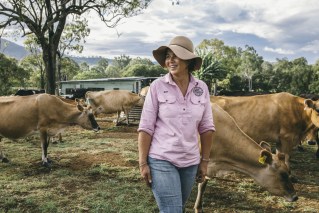Book extract: The Man Next Door by Mike Colman
Mike Colman’s new book, The Man Next Door, is a collection of Mike’s best war writing. In today’s summer reading extract the story of Sergeant Ray McMillan – who was a aircraftman on the Hudson bomber that sunk the Awazisan Maru in 1941 – is told, from his decision as a 21-year-old to join the RAAF in 1938 until his capture by the Japanese in 1942.
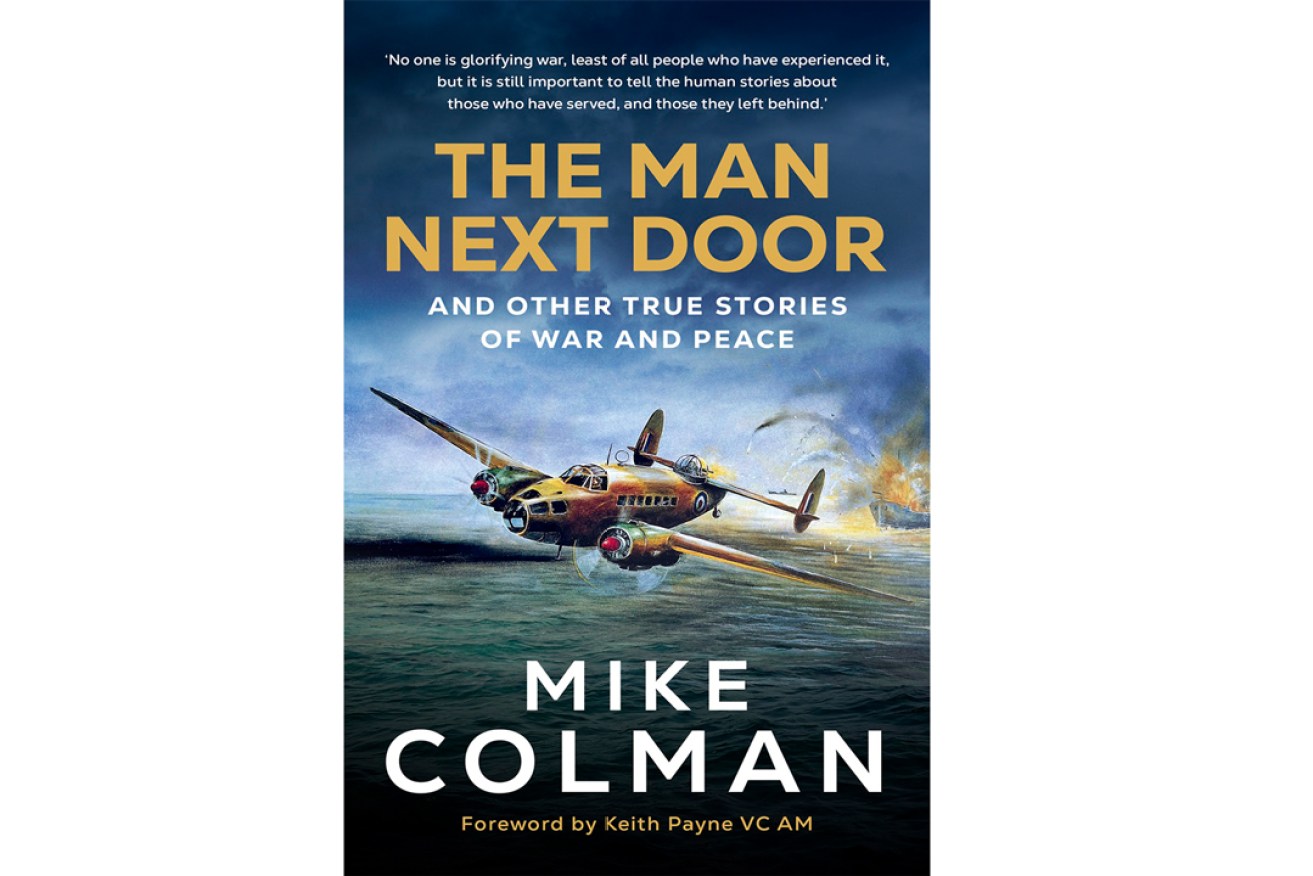
RAY McMILLAN WAS BORN at Wee Waa, NSW, on February 7, 1916, the third youngest of a family of eight children. His father, James — known as Jim — was a farmer who had owned a grazing property near Coonamble on the central western plains of NSW. When that was not successful, he purchased Paisley, a property 16km south of Wee Waa. From Coonamble to Wee Waa is around 150km, which now takes about an hour and a quarter by car on the sealed Pilliga Road. Jim covered the distance on little more than a dirt track with his horse and wagon team, while his wife Ruby followed behind, driving a horse and sulky with five children on board. Paisley would eventually support sheep, cattle and a small acreage of wheat, but when Jim purchased it, the land was covered in timber so until it was income-producing he made ends meet as a carrier using his horse team and wagon. From the age of 11, while still attending the small one-building local school, Ray joined his father and older brother Keith working on the property.
‘The work was mainly ring-barking the trees and clearing the dead timber,’ he wrote. ‘Other activities included fencing, lopping trees for stock in times of drought, assisting in the shearing and the dipping and crutching of sheep.’
The family didn’t live at Paisley. They stayed on a smaller property on the outskirts of town. With Jim and Keith working at Paisley from Monday to Saturday morning, it was left to Ray to do most of the chores at the smaller place. He milked the cows, collected firewood, lit the fuel stove first thing in the morning and, in what would become a lifelong passion, tended the garden. He also did odd jobs around the town to earn money, which would lead to him joining the air force.
In August 1932 with shearing in progress at Paisley, I received a phone call from the local postmaster asking whether I was interested in relieving the post office telegraph messenger who was going on holidays for three weeks. I lost no time in saying yes, and from then until joining the air force I did relieving work in the post office when it was available.
Ray left school at the end of 1931 after gaining his Intermediate Certificate. With the Depression at its worst, there were no fulltime jobs in the town but while working at the post office Ray became proficient at Morse Code and he had dreams of working as a radio operator on an ocean liner. Instead, in September 1938, after seeing an advertisement in the Sydney Morning Herald, Ray travelled to Newcastle by train to apply to join the Royal Australian Air Force (RAAF) as a Wireless Operator (Air). His application successful, in April 1939 he was sworn in at the Air Board offices in Melbourne.
Along with around 30 other recruits, Ray began a six-month training course at Laverton air base near Melbourne. His first posting after graduating as an Aircraftman 1st Class (AC1) was with No. 21 Squadron, Melbourne, before joining No. 1 Squadron back at Laverton. On June 30, 1940, No. 1 Squadron, consisting of 12 Lockheed Hudson bombers, took off from Laverton bound for Sembawang Air Base, Singapore. More than 12 months later, the squadron headed to a primitive base at Kota Bharu on the northeast coast of Malaya, close to the Thai border, where they swapped places with their ‘sister unit’ No. 8 Squadron. The posting was expected to be for six months, but the Japanese had other plans.
‘As the months passed the threat of war with the Japanese had increased,’ Ray wrote. ‘Eventually we were placed on top alert anticipating a Jap landing.’
The squadron carried out reconnaissance flights over the South China Sea looking for a Japanese fleet that was known to have left its base in Indochina. Two fleets were sighted and the US alerted.
The Japanese bombing of the US naval base at Pearl Harbor, Hawaii, at 7.55am on December 7, 1941, was planned as part of a three-pronged surprise attack, with troop landings at Malaya and Thailand scheduled to occur simultaneously. Due to poor weather delaying the air attack on Pearl Harbor, the invasion of Malaya, closely followed by that of Thailand, was actually Japan’s first act of aggression of the war. Just after midnight local time, around 5200 Japanese troops began coming ashore on Pantai Sabak beach at Kota Bharu, just three kilometres from the air base where Ray and RAAF No. 1 Squadron were stationed. The Japanese force included three troop carriers supported by a destroyer, the Ayanami.
After receiving the go-ahead from Royal Air Force (RAF) headquarters in Singapore, the squadron was quickly in the air under instructions to bomb the ships and strafe the Japanese troops as they came ashore. On the ground, outnumbered Indian soldiers and British artillery attempted to hold back the invasion force with little effect.
The Australians in the air had more success. The first of the Hudsons, piloted by Flight Lieutenant John Lockwood with Bob Thomson, a mate of Ray’s from Laverton, as wireless operator, took off in driving rain just after 2am. Ray’s aircraft, A16-52, piloted by Flight Lieutenant Oscar ‘Ossie’ Diamond, a 25-year-old dry cleaner’s son from New Farm, Brisbane, with co-pilot Pilot Officer George Evans and rear gunner Sergeant Sam Wells, followed 20 minutes later. Ray, having completed a gunnery course during his time at Kota Bharu, was wireless operator/air gunner. On their first run over the target, they recorded a near miss on a troop ship, but no direct hits. After returning to base to reload with four 250-pound bombs, they managed to take off from the now waterlogged runway and were back at the coast in a matter of minutes. The first ship that came into view was the Awazisan Maru, a high-speed cargo ship launched in 1939 by Mitsui OSK Lines for the Yokohama-New York route before being requisitioned by the Japanese Imperial Army as a troop carrier in 1941.
After the war, Flight Lieutenant Diamond, who in 1946 was awarded the Distinguished Flying Cross for his actions that morning, told the ABC what happened next.
It was the first ship that I saw and straight away we attacked it and did two runs on it. I dropped a couple of bombs on the first run which I think straddled it but on the second run we seemed to have hit it right in the middle with two bombs. There was a terrific explosion, so we knew that we’d done the job on it. At the same time my aircraft got badly damaged from the flak which I suppose came off the bombs because it was a masthead attack. We weren’t high level, it was masthead, straight into the shipping.
The official history of Mitsui OSK Lines records the attack from the Japanese point of view and states that the bombs from A16-52 hit the second hatch of the Awazisan Maru.
That ignited the fuel drums and ammunition piled up on the deck into a large fire which spread to the bridge and third hatch. All ship function halted but the enemy’s attack continued. The order of ‘all leave the ship’ was issued but there were many wounded crew on the mid-deck. Also, for fear of coming explosions, the landing boats that Awazisan Maru had discharged earlier could not approach the ship to rescue. Using lifeboats or jumping in the water, they managed to escape by themselves.
Ray’s job at this time was to keep up a barrage of machine-gun fire.
I had manned the starboard side machine gun and had a busy time spraying the Japs on the deck of the ship and those trying to get ashore.
The Awazisan Maru was abandoned at 7am, and its remains finished off by a Dutch submarine two months later. It was the first Japanese ship sunk in World War II and the largest destroyed by Australian forces in the Pacific conflict. Lying in 20 metres of water off Pantai Sabak, it is now a popular diving site.
It was only when they returned to base and ground crew inspected the aircraft that it became evident how close they had come to ending up in the water or jungle.
‘Anti-aircraft fire from the protecting Jap cruisers and destroyers was heavy and on our return to base we were not surprised to see we had been hit in a number of places by enemy gunfire, or shrapnel caused by our bombing,’ Ray wrote. ‘One missile struck the starboard motor’s oil line, and it was estimated the engine would have seized within a couple of minutes.’
Following repairs to their aircraft, the crew was back up in the air five hours later, this time flying some 100km north to Thailand where the second prong of the Japanese invasion force was moving south to link up with their troops advancing north through Malaya. No. 1 Squadron was tasked with bombing a vital railway bridge but caused only light damage. The crew then returned to Kota Bharu where it was the Australians’ turn to come under fire, with the base attacked by Zeros and Mitsubishi ‘Betty’ bombers, and several Australian aircraft damaged by machine-gun fire. With Japanese ground troops advancing to within 250 metres of the airfield, the decision was made to evacuate to Kuantan, 350km south on the east coast of the Malayan Peninsula. When the crew arrived at Kuantan, they found the base in disarray. The aerodrome had been bombed and there were reports of Japanese troops landing on the coast. A friend from the wireless course at Laverton found Ray a bed for the night. He was awakened early the next morning by the sound of gunfire and airmen running and shouting.
On enquiry I found that the base was being evacuated as the Japanese had come ashore and were not far away. I managed to find a spot in a heavily laden Hudson and we took off for Singapore with the enemy in the bush adjacent to the airstrip. As we rose over the airstrip I could see Japs coming onto the runway and some could be seen firing at us.
Back in Sembawang the squadron was billeted in huts among the rubber trees on the perimeter of the aerodrome. Each day Ray’s crew flew reconnaissance missions out to sea and up and down the coast. Twice they were attacked by Japanese aircraft, but Flight Lieutenant Diamond took evasive action, and no damage was done. Other crews also came under fire and while no aircraft were lost, one airman was killed and another wounded.
Using the former RAF bases they had captured in Malaya, the Japanese launched regular air attacks on the city of Singapore and it wasn’t long before bombs also started falling on Sembawang base. Even so, the squadron continued operations, with Ray’s crew part of an attack that caused major damage to a Japanese radio ship, but eventually it became obvious that remaining in Singapore was untenable and the squadron was ordered to evacuate to the island of Sumatra. There were two airfields on Sumatra, known as P1, which was used in peacetime, and P2, a supposedly ‘secret’ military airstrip 50km west of the city of Palembang where Ray’s squadron was sent.
‘There were hardly any facilities on P2, it was merely an aircraft landing strip cut out of the bush,’ Ray recalled. ‘We sheltered in small tents in the scrub, and there was no canteen. I remember that on occasions a beer truck would arrive, and everyone would rush to the truck to get a bottle of warm beer.’
On February 14, 1942, Ray and his crew were involved in a major operation against a Japanese invasion force coming from the direction of Bangka Island off the east coast of Sumatra.
From early morning, RAAF Hudsons and RAF Blenheim bombers had flown missions against the Japanese. Ossie Diamond, with his usual crew of George Evans, Jack Walsh and Ray on board, took off from P2 airfield around 11am.
We were accompanied by another Hudson until we reached our target. To say that I was amazed at the size of the enemy fleet would be an understatement. The fleet stretched out over many miles and included destroyers, cruisers and an aircraft carrier. Diamond took the aircraft to a shallow dive over a troopship and dropped the bombs, four 250-pound bombs. Some damage was done to the troopship.
After the bomb dropping we looked around for the other Hudson but could not see it. The Captain then decided to go around the fleet again and in doing so was sighted by two enemy Zero fighter planes. The enemy then attacked and we dived to about one hundred feet above the ocean. The attack lasted for several minutes. I manned the port side cabin machine gun, Evans the starboard side gun, Walsh the rear turret and the Captain, the twin Brownings up front. Our plane was badly crippled by enemy fire. The starboard motor was disabled, the undercarriage and one wheel being damaged as well as the tail plane.
Reduced to one engine and around 80km off the Sumatran coast and the same again to the strip at P1, and further to P2, Flight Lieutenant Diamond made the decision to try to make it to the closer P1 airfield. The Zeros, believing the stricken Hudson was going to crash, gave up the chase. Diamond followed the Musi River until P1 came into sight.
Ossie made a terrific crash landing. We had been extremely lucky to survive, especially after he pointed out a large bullet hole near the base of his aircraft seat. He explained that during the attack by the Japs he had frequently risen in his seat to see where the enemy planes were. As luck had it, he was doing this when the bullet struck. We made a hurried exit from the plane until we heard a Pommy voice from a nearby slit hole say, ‘Put your f****** heads down as the place is surrounded by Japs.’
Unbeknown to us Japanese paratroops had surrounded the aerodrome that morning. There was plenty of rifle and mortar fire coming from the enemy and British servicemen defenders. Clearly visible were a number of parachutes dangling from nearby rubber trees.
Diamond decided to try to fly out another damaged Hudson located near the hangars. The crew ran over and clambered aboard, but the tips of the propellers had been bent in a forced landing earlier in the day. Despite Diamond gunning the engines, the aircraft would not lift off and came to rest against barbed wire at the end of the runway. They set it alight using a flare gun and made a run for the rubber trees, about 100 metres away.
Before reaching the rubber trees we were subject to rifle and mortar fire from the Jap paratroops but fortunately not one of us was injured. Tall grass grew among the trees and there we sought cover. Crouching low in the grass we could hear a group of Japanese talking a short distance away but our luck held and we were not spotted. When dusk fell, we joined a group of British soldiers and headed for Palembang via an area of swamps and paddy fields. Leeches clung to our legs, and I lost my shoes in the bog. Sometime after midnight we reached the city and headed for the Air Force headquarters. The officer on duty gave me his size nine tan shoes to wear and which I kept for about two weeks. My normal shoe size is six and a half.
The next morning Ray and Jack Walsh caught a bus to P2, only to find the squadron had left for Java the previous day. Ray went to his tent, but all his clothing and some money he had left with a friend for safekeeping were gone. He and Walsh caught another bus to Oosterhaven, a port on the eastern end of Sumatra. They then caught a ride on a boat to Batavia (now Jakarta) and obtained military transport to RAF headquarters at Semplak, near Buitenzorg in central Java.
Told that what was left of No. 1 Squadron was now based at Kalijati on the north coast, near to where Japanese forces were reported to be planning a landing, Ray caught another bus to the town. He arrived at the airstrip after nightfall to find that his squadron was engaged in trying to bomb the enemy a little distance offshore. He was told to report for flying duties the next morning and found a bunk for the night.
I was awakened early in the morning to hear that the Japs had landed and some had been seen near the perimeter of the airstrip. The Commanding Officer then gave the order to abandon the station. Along with others I hurried to the aircraft hangars and went aboard a Hudson about to take off. As we became airborne we were fired upon by Japanese troops in armoured cars near the runway. Our destination was Bandung in central Java.
When they arrived at Bandung and joined up with No. 8 Squadron, the hopelessness of the situation became obvious. Combining their resources, the two squadrons could muster just a handful of aircraft. It was decided that all No. 8 Squadron personnel and non-vital staff from No. 1 Squadron should be repatriated to Australia, leaving around 180 men, mainly aircrew and ground engineers.
The remnants of No. 1 Squadron did their best to remain operational and continued to fly reconnaissance missions despite overwhelming Japanese opposition, but when they were down to just three serviceable aircraft the squadron’s commanding officer, Wing Commander Reginald Davis, decided it was time to leave Java.
He directed that we travel by trucks to a beach on the south coast near Tjilajap where Catalina aircraft from Australia would pick us up. As we waited in our trucks near Bandung, a Hudson flew low over us heading for home. We were all very miserable.
Ray and about 30 others stayed in an abandoned hut on a tea plantation a short distance away in the hills. The remainder of the squadron was camped on the beach. One of the wireless operators had set up a transmitter and got through to the RAAF in Darwin, who advised that Catalinas would be sent from Broome, Western Australia, to pick them up. When the aircraft hadn’t arrived after two days, Ray was part of a party sent further east along the coast to check if they had landed there.
After many hours traversing the rough country we reached the ocean at Tjilajap and waited. We stayed there a couple of days and no Catalinas arrived so we returned to the tea plantation. Several more days passed and it became obvious that we were not to be rescued.
What Ray would not learn until after the war, was that on March 3, 1942 — the very day that he and the others were scanning the skies hoping to see the flying boats heading towards them — Japanese aircraft had attacked Broome Harbour, destroying six Catalinas and killing 80 Dutch civilians, including women and children, who had just been evacuated from Java.
‘The next thing to occur was the receipt of a message from the Japs that we were to give ourselves up or they would come and take us,’ Ray wrote. ‘Faced with the futility of trying some way of escaping, which had been given considerable thought, we boarded our truck on 6th March, 1942, and came to a small town called Wanaraja. There we passed a line of Jap troops and became POWs. I had a very sinking feeling. I think the official date of my capture was 8th March, 1942.’
The Man Next Door by Mike Colman is published by Stoke Hill Press. It is available wherever good books are sold and at www.stokehillpress.com, with a recommended retail price of $32.99. For more information about the book or to obtain a review copy, please contact Geoff Armstrong on 0413 532 623 or by email: [email protected]

